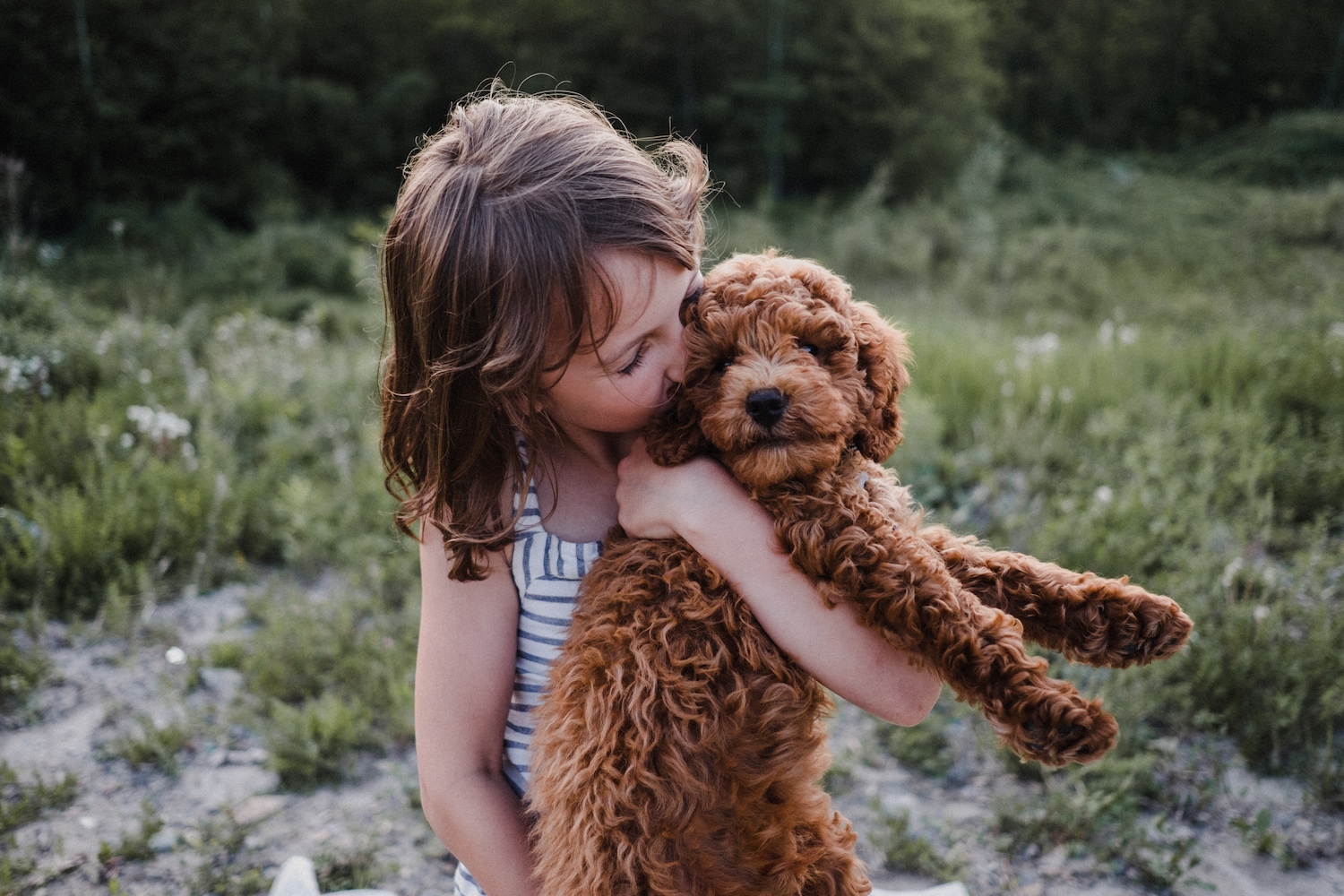Pets can be an important part of family life, but knowing the right time to bring an animal into your home is tricky. To learn more about how parents can tell if their kids are ready for a pet, we talked to Gina DiNardo, a spokesperson at the American Kennel Club; KC Theisen, director of pet care issues for The Humane Society of the United States; Lisl Fair, author of “Good Enough Parenting” and Colleen Pelar, author of “Living with Kids and Dogs … Without Losing Your Mind.”
Here they offer their insight on what you should know before adding a pet to your family:
1. Your child is comfortable around animals
Getting a pet isn’t the cure for a fear of animals. “A fearful child is more likely to make a mistake around animals,” says Theisen, so work on building up your child’s comfort level in ways other than getting your own pet. Visit an animal shelter or spend time with friends’ pets. Begin by introducing your child to calm animals, such as older dogs, rather than puppies.
“Some children are naturally scared of animals, and parents should not force their children to touch or interact with a pet; rather, let the example of how you interact with the pet guide them out of their fears,” says Fair.
2. Your child shows respect for animals
Kids must respect the guidelines for appropriate behavior around animals. For example, they must understand pets should not be tugged or hit. They must be touched gently and left alone while eating. Just because a child wants to interact with a pet doesn’t mean it’s an appropriate time to do so, and kids need to have the self-control to leave the animal alone.
3. Your child can handle household tasks
How does your child do when you ask him to unload the dishwasher or set the table? If he’s taking care of his current responsibilities, he might be ready to participate in pet care.
4. Your child remembers to brush teeth without reminders
Fair suggests remembering to brush one’s teeth every day without being reminded is a good indication of a child’s maturity level and readiness for pet care.
“If the child is going to have the main responsibility for the pet, it is best to wait until they are pre-teen to early teens,” DiNardo says. “Before that, they can help out, but some important care-giving aspects, like walks and training, cannot be done alone by a child.”
No matter the age of your child, however, expect to do spot checks on how they’re doing, and be prepared to take over the responsibilities if they’re not following through.
5. Your children are truly committed to the idea of getting a pet
Make sure your child is in this for the long haul before bringing your new pet home. Determine whether the wish for a pet is a passing fad or a desire that will stick around, even when pet ownership feels like a chore. As Theisen says, “The novelty wears off.”
6. Your children want a pet that fits the whole family
Children need to understand not every pet will be right for your family. Pelar says every animal needs enrichment, but some need more than others, so consider which pets fit the time and space you have available. Birds require the most time investment, followed by dogs, then cats.
The American Kennel Club offers information to help families who are interested in dog ownership select the right breed. Additionally, Fair points out that small animals aren’t always a good fit in a family with very small children: “Toddlers could easily love smaller pets to death.”
7. Your child has a lot of energy
If your child loves running around in the yard, going to the park and playing outside, a pet may help him or her get all of that extra energy out. If your children are old enough, they can walk the dog together after dinner to get some exercise or you can all go as a family.
8. Your family has given pet ownership a successful trial run
“Spend time with pets before acquiring one,” Theisen encourages. Pelar suggests offering to take on a weekend of dog sitting in your own home, so kids can experience what it’s like to have a animal in their everyday environment. Cats, however, are not a good animal for a pet-sitting experience; a change in environment stresses cats, so it’s not a good idea to bring one into your home for the weekend.
9. Your entire family is on board
“The entire family should be engaged in the adoption of a new pet,” says Theisen. If anyone in your house is allergic to animals or doesn’t like them, then your family needs to respect that. Pet ownership can be a rewarding experience, but if the whole family doesn’t support the idea, then this isn’t the right time to get a pet.
10. You’re prepared to take on the responsibility
Lastly, if your family is going to get a pet, the adults in the house need to assume responsibility for the animal. Pelar says the appropriate way to think about it is that you are getting a family pet in whose care the children can participate, rather than expecting your children will be the main caretakers. Even if your child shows every sign of readiness, if you’re not ready, then it’s not the right time.
There are many benefits to having pets. They provide companionship, lessons in responsibility, emotional well-being and countless other perks. However, pet ownership is only a good thing when your family is ready for it. If you’re considering bringing an animal into your family, let our experts’ advice guide your decision, so your introduction to pet ownership will be the best it can be.
Wondering what type of pet would be the best fit? Read
Choose the Right Pet for Your Family
.
Meghan Ross is a freelance writer.

